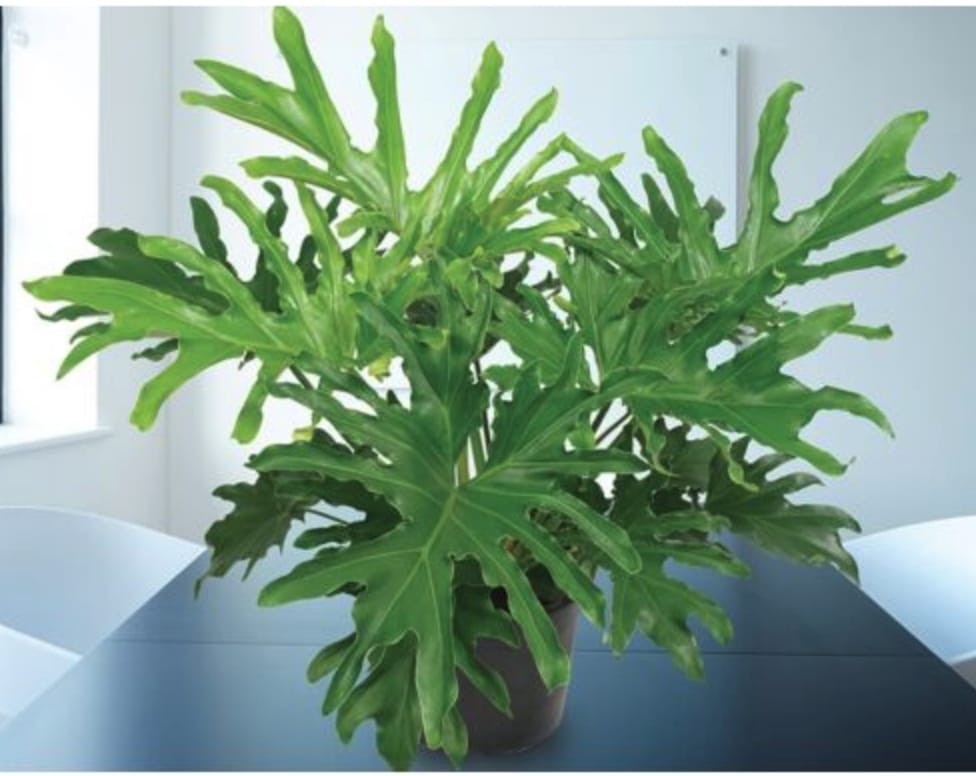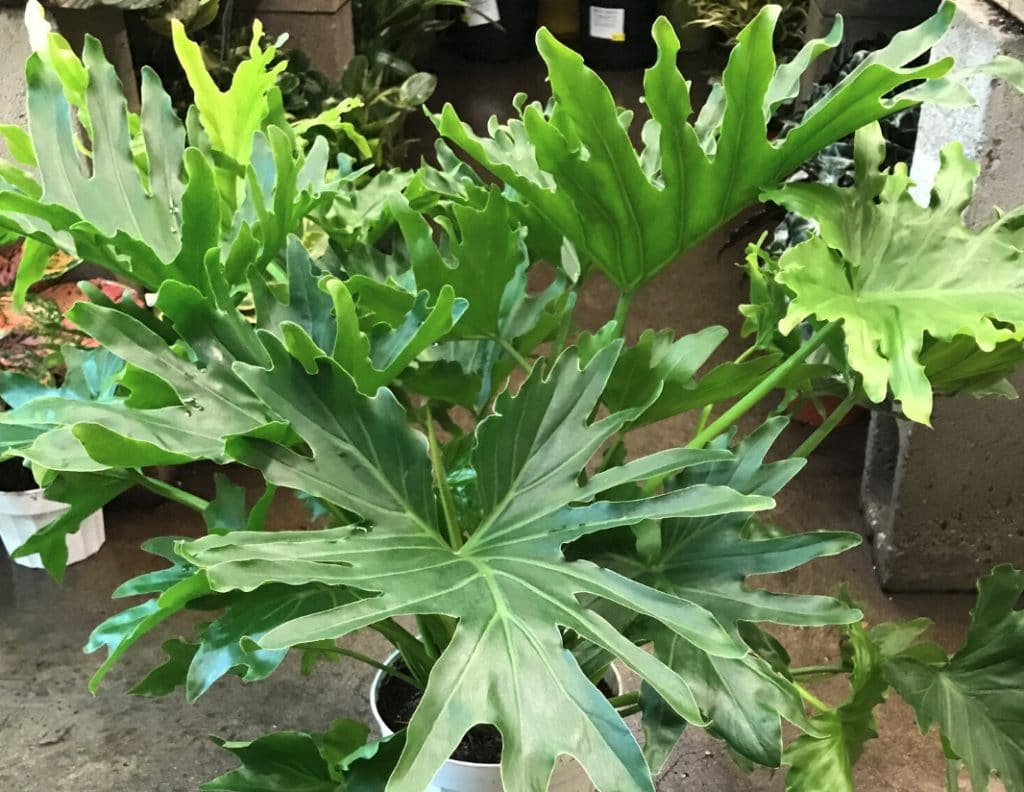Philodendron Lickety Split is a plant that grows quickly and spreads. As its name suggests, it has split leaves that are light green in color and have corrugated edges. These plants have a bush-like growing habit and are recommended for beginner gardeners because they are easy to care for.
Philodendron Lickety Split plants are commonly grown as houseplants but can also be grown outside in USDA zones 9 to 11. Let’s look at how to grow and care for this lovely Philodendron.
What is a Philodendron Lickety Split?

The Philodendron Lickety Split is a beautiful tropical perennial that originates from the rainforests of Brazil and other areas in South America. It’s a member of the Araceae family, which has hundreds of species.
It has glossy green leaves that are unique. Every new leaf looks slightly different from the last, making these plants eye-catching and interesting to grow. These plants are fast-growing and can get pretty large. They have a bush-like growth habit and spread sideways. When grown indoors, the plants can be kept compact with regular pruning.
It is an excellent choice if you’re looking for an air-purifying plant. It can filter airborne toxins from the atmosphere and eliminate chemicals such as formaldehyde, xylene, and ammonia. Like all philodendrons, the lickety-split is toxic to humans and animals ingested. Be careful growing these plants if you have pets or young children.
How to Care for a Philodendron Lickety Split
Philodendron Lickety Split plants are easy to care for. As long as you get the basics right, your plant will thrive. Here are some tips to help you grow a thriving Philodendron Lickety Split:
Sunlight needs
Philodendrons require bright but indirect sunlight to grow well, also thrive in a partially shady area of the home. They grow best when they receive mostly indirect light, such as from a northern or eastern window. Avoid direct sunlight on the foliage of your plant to prevent leaf burn.
Watering requirements
Young plants should be kept moist but not wet. Mature plants prefer to be kept moist during the spring and summer but should have some drying time in between watering. To check if you need to water your Philodendron Lickety Split, feel the soil with your finger about 2 inches into the ground to see if it feels damp or dry. Be careful not to overwater, or your plant will suffer from root rot.
Temperature
These plants do best in temperatures between 60 and 80 °F. Make sure to protect your plant from cold drafts and heat.
Humidity
Philodendrons Lickety Split plants prefer 50 to 80% humidity, especially during the winter when indoor heating can dry out the air. Mist the leaves of your Philodendron Lickety Split to increase humidity if necessary, or place it on a tray with pebbles and water to raise the humidity around it. You can also group tropical plants together or place your philodendron in the bathroom, where it will benefit from the steam from the shower.
Fertilization
Fertilize Philodendron Lickety Split plants two times a month with a 10-10-10 fertilizer diluted by half during the spring and summer growing season. Do not fertilize in winter as the plant will become dormant.
Pruning
To maintain the size of your Philodendron Lickety Split, prune off a few of the older leaves with sharp scissors, cutting about an inch below a leaf node or set of leaves. You can then either discard these cuttings or give them to a friend to propagate. Pruning also encourages new growth near the base of your plant’s stem, making it more compact.
Soil
Use cactus or succulent soil mix for potting your Philodendron Lickety Split. This type of soil is loose and drains well, so you don’t have to worry about root rot! If you want to mix your own soil, use a mixture of 50 percent potting soil, 25 percent peat moss, and 25 percent perlite. Philodendrons like soil that’s slightly acidic and grow well in soil with a pH of between 5.0 and 6.0.
Repotting
If your Lickety Split plant has outgrown its pot, repot it in spring using a heavy container with drainage holes. Use soil that is good for succulents and cacti, and ensure the top of the root ball sits about 1 inch below the rim of your pot to allow for watering without standing water. Do not overwater your Philodendron Lickety Split to prevent root rot.
Conclusion
Philodendron Lickety Split is an easy plant to grow indoors. Once you find the perfect spot in your home, place the plant in bright indirect light and mist its leaves when necessary. It will grow and flourish with regular watering and well-drained soil.
If you follow this guide to take good care of your lickety-split, it will reward you with beautiful lush foliage year after year!
